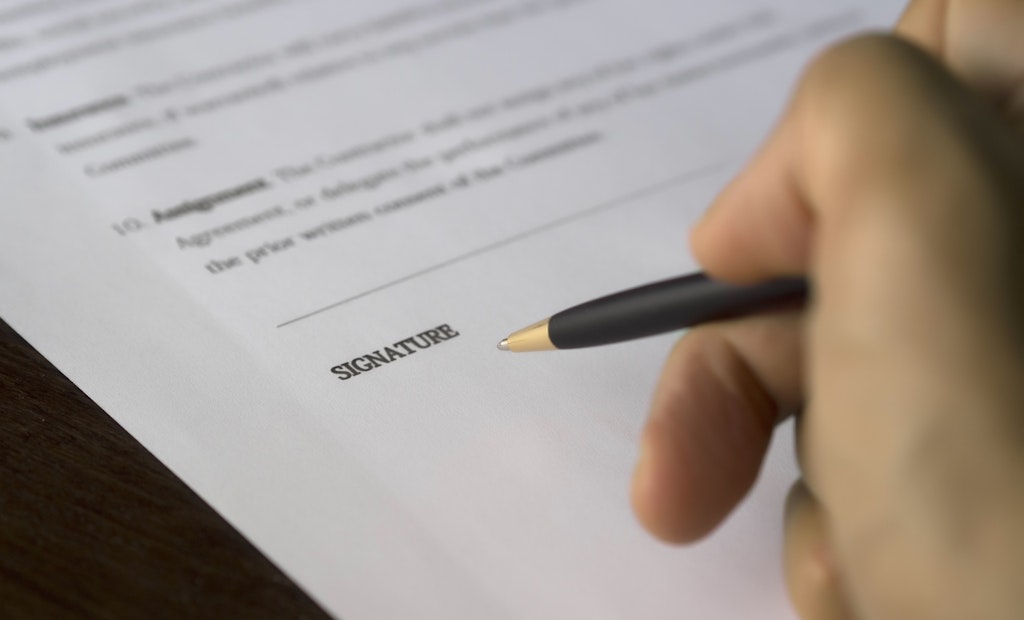Interested in Business?
Get Business articles, news and videos right in your inbox! Sign up now.
Business + Get AlertsWe’ve all done it: downloaded a new app on a smartphone, added new software to a laptop, or purchased something online with a credit card, and then scrolled through the lines and lines of microscopic type that make up the terms and conditions and clicked “accept” without reading a word. Most of the time that knee-jerk — or rather finger-jerk — response doesn’t matter. But when it comes to taking out a business loan, the fine print is a bigger deal because if there’s a blanket lien lurking there, you could be putting your entire business in jeopardy.
What’s a lien?
A lien is legal language written into a loan. It protects the lender if the borrower defaults. Liens are a safety net for the lender, and while not necessarily a bad thing for the borrower, it’s best to know if a lien is included in the fine print and what kind of lien it is.
A lien against a business means the lender has the right to acquire the borrower’s assets if the loan isn’t paid back as agreed upon. Things get sticky, however, if there are multiple loans from multiple lenders with multiple liens because then, in the case of default, each lender wants to be first in line for those assets. Being second or third in line is a much riskier position for a lender. There may be nothing left to take as repayment.
Specific vs. blanket liens
The inclusion of a lien is not necessarily a reason to avoid borrowing money from a particular lender. For example, with a typical equipment loan, the lien simply covers that piece of equipment. That’s called a specific lien. If you default on a loan with a specific lien, the lender can acquire that specific piece of equipment.
What business owners need to be extra cautious about is something called a blanket lien. While it sounds all warm and cozy, a blanket lien can be anything but, leaving a borrower out in the cold. Why? Because with a blanket lien, a lender can seize all of a borrower’s assets — personal and business — in the case of default.
A blanket lien can be like sharing a too-small blanket with someone much bigger than you on a cold night. Basically, the big guy gets the most protection while the small borrower can be left shivering.
Why would a business owner agree to a loan with a blanket lien? Besides not knowing about the blanket lien by neglecting to read the fine print, a borrower may feel they have no choice if they are in particularly difficult financial straits and have to borrow money from two different lenders. As mentioned above, no one wants to be in second place when it comes to getting what they are owed. If lender No. 1 has a lien on the equipment, lender No. 2 may insist on a blanket lien before agreeing to loan a business money.
Who knows?
You may be wondering how a second lender would even know about a lien held by the first lender. That’s where the fine print turns into the alphabet soup of the Uniform Commercial Code (UCC), which regulates business across state lines. The UCC-1 form, also called a financing statement, must be filed by lenders in the secretary of state’s office in the state where the borrower’s business is located or in multiple states if the business is near a border or has locations in more than one state.
UCC-1 information is public, so before a lender agrees to a loan, they do a lien search to see if any other UCC-1s are filed against the particular asset being financed. If there are other lenders with UCC-1s filed against the same asset, the one filed earliest is the first lien.
Protect your business
If you’re not sure, look to see if there are already liens against any of your assets. You can check with your state’s secretary of state office for any UCC-1s filed for your business.
How could there be a lien against your business that you don’t know about? First of all, UCC-1 financing statements are not signed by the borrower, and some banks and other lenders file when applications are submitted. So even if you didn’t end up using a particular lender, a UCC-1 can still be on file and you may have to take the initiative (and possibly pay a fee) to have it terminated.
It’s also the borrower’s responsibility to terminate the UCC-1 filing after a loan is paid off. It’s important to do this as soon as you can because with mergers and acquisitions, records can be a challenge to track down over time. It’s important to do this, though, because if a potential new lender finds an old UCC-1 before it is terminated, they may assume they are second in line and deny your loan request or implement a blanket lien when a specific lien would have been adequate.
When determining if there are any old liens floating around out there, consider whether your company has changed names or if you or your business go by more than one name.
One last note: Small Business Administration loans often require a blanket lien, so if you’ve ever had an SBA loan, additional lenders can discover they will not be in first lien position and reject your application. If you require one loan for specific assets like equipment and need a second loan for working capital, you may have to negotiate to make sure both lenders are comfortable with their lien positions.
Read any loan agreement thoroughly, including the fine print, or pay an attorney to read it for you and advise you on what, exactly, you are agreeing to in terms of paying back the loan. Be aware of any liens, especially blanket liens, hidden in that fine print.






